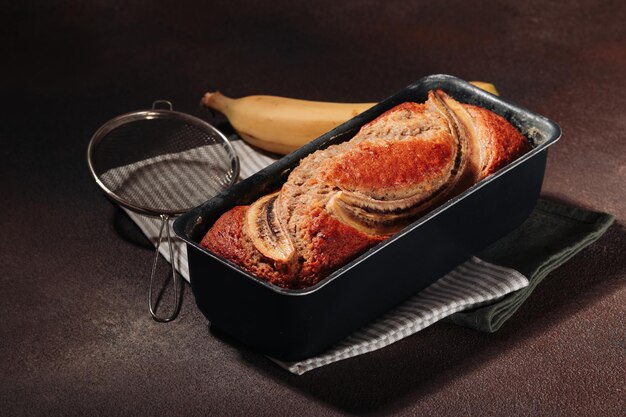How to Perfectly Defrost Prime Rib in Your Refrigerator
Prime rib is often the centerpiece of festive occasions or special gatherings, known for its rich flavor and tender texture. Defrosting prime rib correctly is key to ensuring that this expensive cut of meat is safely prepared for cooking, maintaining both its quality and taste. Understanding the nuances of defrosting can make all the difference between a succulent masterpiece and a culinary letdown.
Why Proper Defrosting Matters
Defrosting prime rib safely is not only about taste but also about health. Incorrectly thawed meat can harbor bacteria, which may lead to foodborne illnesses. Additionally, improper defrosting can affect the texture and flavor of the meat. Let’s explore how long it takes to defrost a prime rib in your refrigerator and why this method stands out.
Benefits of Refrigerator Defrosting
Refrigerator defrosting is often seen as the gold standard for thawing meats, especially for larger cuts like prime rib. Here’s why:
- Safety First: Thawing in the fridge keeps the meat at a constant, safe temperature, minimizing the risk of bacterial growth.
- Flavor Retention: Gradual thawing helps maintain the natural juices of the meat, preserving its flavor.
- Texture Preservation: Slowly defrosting ensures the meat retains its original texture, preventing unwanted toughness.
Time Frame for Defrosting Prime Rib
Understanding the time it takes to defrost prime rib in the refrigerator depends largely on the size and weight of the rib:
- Small Cuts (2-3 pounds): Generally take about 24 hours.
- Medium Cuts (4-6 pounds): Require approximately 36 to 48 hours.
- Large Cuts (7-10 pounds or more): May take up to 72 hours or more.
Key Tip: When planning a meal involving prime rib, account for defrosting time to ensure your preparation aligns with your schedule.
How to Defrost Prime Rib in the Refrigerator
Follow these steps for effective defrosting:
Preparation: Keep the prime rib in its original packaging or place it on a dish to catch any juices during thawing. This prevents contamination and keeps your fridge clean.
Proper Placement: Place the dish on the bottom shelf of your refrigerator. This minimizes the potential cross-contamination from raw juices dripping onto other foods.
Optimal Temperature: Ensure your refrigerator is set at 40°F (4°C) or lower for safe thawing.
Alternatives to Refrigerator Defrosting
While the refrigerator method is preferred, sometimes time constraints require alternative methods:
Cold Water Thawing
- Process: Submerge the meat, still in its packaging, in a sink filled with cold water. Change the water every 30 minutes to keep it at a safe temperature.
- Time: This faster method generally takes about 30 minutes per pound.
Microwave Defrosting
- Quick Option: Use the defrost setting on your microwave. However, this method can affect texture and should be used for immediate cooking.
- Watch Closely: It is crucial to cook the meat immediately after microwave defrosting to prevent bacterial growth.
Avoid These Common Mistakes
Here are some pitfalls to avoid when defrosting prime rib:
- Room Temperature Thawing: Never leave meat to thaw on the counter. This can lead to uneven temperature distribution, increasing the risk of bacteria.
- Warm Water Soak: Hot or warm water can cause the outer layers of the meat to heat up too quickly, encouraging bacteria and beginning to cook the meat prematurely.
Storing Your Defrosted Prime Rib
Once properly thawed, store your prime rib in the refrigerator if you are not cooking it immediately. Consume or refreeze within 1-2 days to ensure safety and freshness.
Quick Summary: How to Safely Defrost Prime Rib 🥩
Here's a handy guide to keep at your fingertips:
- Refrigerator Defrosting Time:
- Small Cuts (2-3 pounds): ~24 hours
- Medium Cuts (4-6 pounds): 36-48 hours
- Large Cuts (7-10+ pounds): 72 hours or more
- Alternative Methods:
- Cold Water: ~30 minutes per pound, changing water every 30 mins.
- Microwave: Use cautiously; cook immediately after.
- Best Practices:
- Always defrost in original packaging or covered dish.
- Place on the bottom shelf of the fridge.
- Never thaw at room temperature or in warm water.
Enhancing the Prime Rib Experience
Pre-Cooking Tips
To maximize flavor and tenderness in your now-thawed prime rib, consider these steps before cooking:
Season in Advance: Allowing the meat to absorb seasoning by resting at room temperature for 30 minutes before cooking can enhance its flavor.
Invest in a Meat Thermometer: This ensures you cook to the perfect doneness without overcooking.
Cooking Methods for Optimal Results
The preparation method you choose can greatly affect the meal's outcome:
- Roasting: Classic method best known for yielding crispy exteriors and juicy interiors.
- Grilling: Adds a smoky flavor, ideal for a touch of summer delight.
- Reverse Searing: Start by roasting at low temperature, then finish with a hot sear for a perfect crust.
Tip: Let your prime rib rest post-cooking for 10-15 minutes. This allows juices to redistribute, ensuring each bite is as flavorful as the next.
Wrapping Up Prime Rib Perfection
Proper defrosting is an essential step in the preparation of prime rib, especially when done in the refrigerator. This method ensures not only food safety but also preserves the meat's natural quality, which is vital for delivering that melt-in-the-mouth experience every time. By planning ahead and following these guidelines, you can confidently prepare a delicious and impressive prime rib dish that stands out on any dining table.
Whether you're a cooking aficionado or a novice, mastering the art of defrosting is a valuable skill that enhances your culinary repertoire. Enjoy the process and savor the results! 🍖
